Precautions for Riding an Electric Bicycle in Rainy Weather
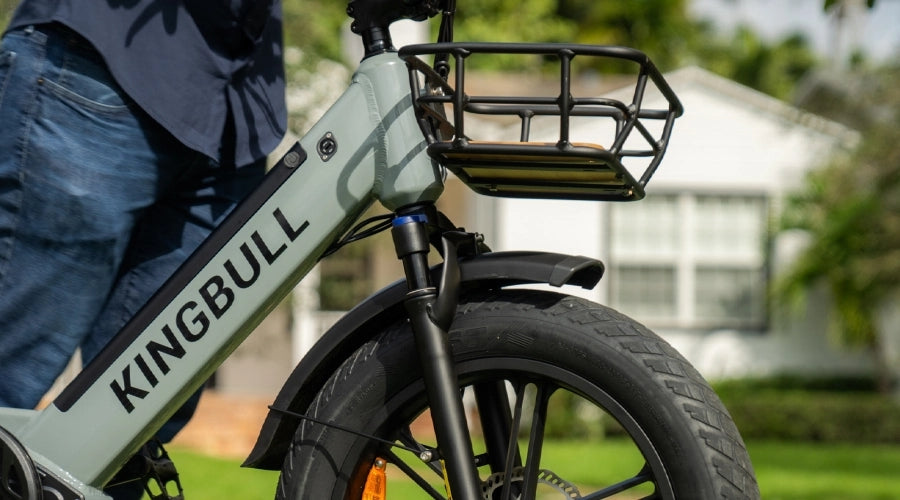
Riding an electric bicycle in rainy weather undoubtedly transforms what is usually a leisurely activity into a more challenging adventure. While you might typically exercise caution and avoid opting for this mode of transportation on rainy days, unexpected showers can catch you off guard. Despite weather forecasts assuring a rain-free day, sudden downpours can disrupt your plans. So, what should you do in such unexpected situations?
Riding an electric bicycle in the rain requires not only additional skills but also heightened vigilance. Navigating through slippery roads is not just a test of your personal safety but also a challenge to your riding abilities. In this article, we will explore some essential tips for riding an electric bicycle in rainy weather, helping you to face these unpredictable conditions with greater safety and confidence. Let's delve into the techniques and safety points for cycling in the rain.
Prioritizing Safety
When riding an electric bike in the rain, safety should always be the top consideration. To ensure that your riding experience is both enjoyable and secure, please take note of the following:
-
Wear an Appropriate Safety Helmet: Regardless of the weather, wearing a helmet is crucial. In rainy conditions, where surfaces can be slippery, a helmet provides additional protection, mitigating the impact of potential falls.
-
Wear Bright and Visible Clothing: Opt for brightly colored and reflective clothing to enhance your visibility in the rain. This helps other road users notice you sooner, reducing the potential for traffic-related risks.
-
Increase Awareness of Your Presence: Install front and rear lights, as well as reflective devices, on your electric bike to heighten awareness of your presence in rainy conditions. This is particularly important during nighttime rides or when visibility is limited.
-
Be Mindful of Slippery Roads: Rain can make roads slippery, so it's essential to maintain a moderate speed. Avoid sudden braking and sharp turns; adopt smooth riding motions to stabilize the bike and reduce the risk of falling.
-
Maintain a Moderate Riding Speed: Avoid excessively high speeds to ensure you have sufficient reaction time to handle unexpected situations. Moderate speeds in rainy weather allow better control of the bike, enhancing overall safety.
-
Steer Clear of Sudden Braking and Sharp Turns: Abrupt braking and sharp turns increase the risk of falls, especially on wet surfaces. Anticipate road conditions ahead, decelerate and turn in a controlled manner for a smooth ride.
Waterproof Gear
Investing in some waterproof gear is essential for riding an electric bike in the rain, ensuring both comfort and functionality. Here are some suggestions regarding waterproof gear:
-
Waterproof Jacket: Choose a well-made, breathable waterproof jacket that effectively repels rain and keeps the body dry. This helps prevent discomfort and the risk of catching a cold due to rainwater penetration.
-
Shoe Covers: Equip your shoes with waterproof covers to prevent rainwater from seeping in, keeping your feet dry. Wet shoes not only cause discomfort but also pose a slipping hazard.
-
Backpack Cover: If you carry a backpack, using a waterproof backpack cover is a wise choice. This ensures that your carried items remain dry, especially sensitive items like electronic devices.
-
Waterproof Design for Electric Bikes: Ensure that the battery and key components of the electric bike have waterproof designs. This helps avoid issues such as short circuits, corrosion, and other potential electrical problems. When purchasing an electric bike, understanding the waterproof rating of the vehicle is an important step.
-
Regularly Check Waterproof Performance: Periodically check the condition of waterproof gear and ensure its continued effectiveness. For example, waterproof jackets may need a fresh coat of waterproofing spray, and shoe covers may wear out and require timely replacement.
Maintenance and Care
After riding an electric bike in the rain, special attention to maintenance is crucial to ensure the vehicle's long-term and efficient operation. Here are some key maintenance steps:
-
Promptly Clean the Bike: Riding in the rain may expose the bike to muddy surfaces. Therefore, it is essential to clean the bike promptly after riding. Pay special attention to cleaning the chain, gears, and brake components to prevent the accumulation of mud and water-induced corrosion.
-
Focus on the Chain and Brake System: These two components are critical to the normal operation of an electric bike. Ensure the chain is clean, free from accumulated mud, and adequately lubricated. Inspect the brake system, making sure there are no foreign objects between the brake pads and discs, and that the brakes are responsive and reliable.
-
Regularly Lubricate the Chain: After riding in the rain, the chain is susceptible to moisture and mud, making regular lubrication essential. Choose an appropriate bicycle chain lubricant and apply it to the chain to reduce wear and improve efficiency.
-
Check All Components: Periodically inspect all components of the electric bike, including tires, bolts, and nuts. Ensure they are securely tightened and show no signs of looseness or corrosion.
Be Mindful of Road Conditions
Riding an electric bicycle in the rain requires extra attention to ensure a smooth and safe journey. Pay close attention to the following road conditions:
-
Watch for Standing Water: Rainy weather often leads to water accumulation on the roads, especially in low-lying areas. Before riding, observe the road conditions and be cautious of areas with standing water to avoid unexpected situations.
-
Avoid Deep Puddles: Steer clear of deep puddles during your journey. Deep water can not only affect the performance of the electric bicycle but also increase the risk of accidents. Choose routes that bypass areas with deep water to ensure a safe ride.
-
Minimize Crossing Water Puddles: During your ride, try to avoid crossing water puddles whenever possible. This precaution reduces the chances of splashing mud and water, preventing your clothes from getting wet or affecting visibility.
-
Be Aware of Splashing Mud: When riding through waterlogged areas, be mindful of potential splashing mud. Maintain a safe distance from other vehicles to prevent mud from splashing onto yourself or others.
Choose Parking Spots Carefully
When parking your electric bike on rainy days, selecting a suitable spot can significantly protect your bike from the effects of rain. Here are some suggestions to help you safeguard your bike more effectively:
-
Opt for Sheltered Areas: Try to find spots with overhead cover such as eaves, trees, or other forms of shelter to minimize direct exposure to rain.
-
Consider Using Waterproof Covers or Shelters: If possible, invest in waterproof covers or locate parking spaces with shelters. Such facilities provide comprehensive protection for your electric bike, preventing direct contact with rain.
-
Regularly Check the Parking Spot: Ensure that the chosen spot is free from puddles or leaks. Check if the ground is flat to avoid rainwater pooling, which could affect the bike's stability.
-
Use a Bike Cover: Consider using a specifically designed bike cover when parking. These covers effectively shield the bike from rain while also preventing dust, dirt, and other elements from impacting the bike.
-
Secure Your Bike: Regardless of the parking method chosen, always remember to use a suitable lock to secure your bike, protecting it from potential theft threats.
By carefully choosing your parking spot and taking appropriate protective measures, you can ensure that your electric bike stays dry when parked in the rain, extending its lifespan and reducing maintenance costs.
Conclusion
Riding an electric bicycle in the rain demands not only additional skills but also heightened alertness. Navigating through slippery roads is not just a test of personal safety but also a challenge to your cycling abilities. In this article, we have explored some recommendations for riding an electric bicycle in rainy weather, helping you navigate these unpredictable conditions with increased safety and confidence. Let's delve into the techniques and safety points for cycling in the rain, with the hope that these suggestions will enable you to face this challenge more calmly when riding in the rain. Whether it's honing your skills, choosing safe routes, or paying attention to the maintenance of your electric bicycle, these measures are all aimed at ensuring that every ride in the rain is a safe and enjoyable experience.







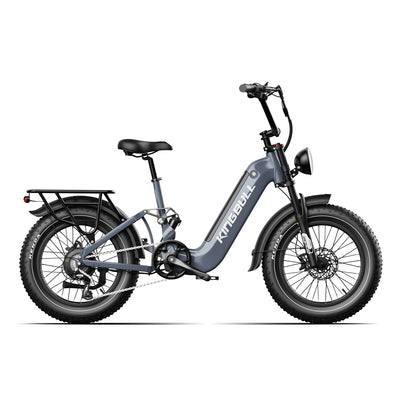
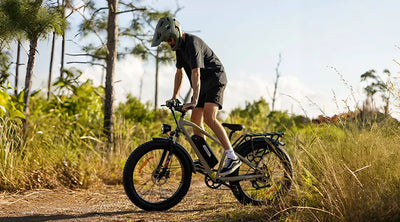

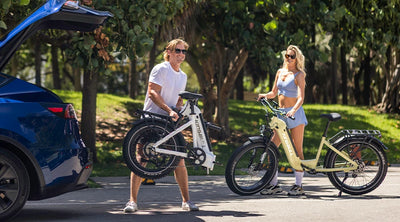
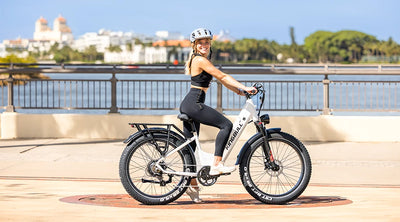
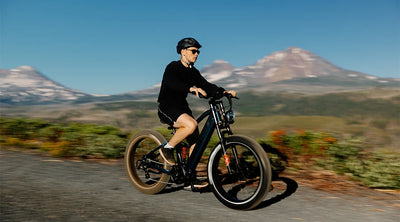
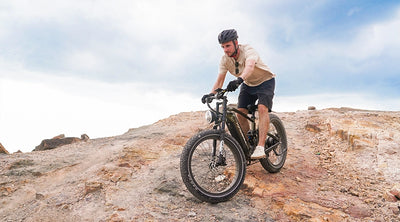


















Leave a comment